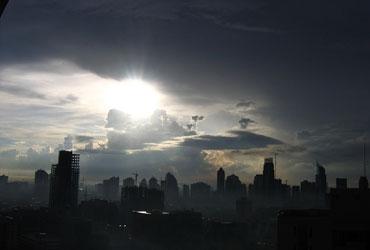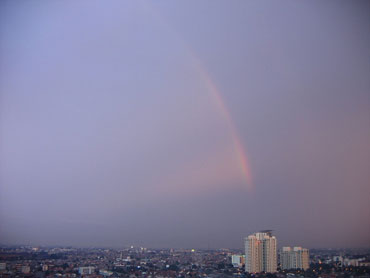
A forecast of below normal rains in 2011 by the India Meteorological Department has sent shivers down everyone's spine.
After IMD released its second forecast for the 2011 monsoon season, its director general Ajit Tyagi tells Business Standard that although the situation could cause some concern, even in the worst case scenario, there won't be a drought this year or a throwback to 2009. Edited excerpts:
A lot of things are being said about IMD's latest forecast for the 2011 monsoon season, that has predicted marginally below normal rains. How should the common man view this? Does it look worrisome from the weatherman's perspective?
I can categorically assure everyone there is no cause for alarm, but yes, concerns remain.
Statistically speaking and going by the past experiences, this year's forecast shows exaggerated weather patterns like floods and droughts might not be there.
There will be evenly distributed rains, although, in less intensity.
. . .

So, you mean to say there is absolutely no reason for anyone to worry and we won't have a repeat of 2009?
Look, I answer from the weatherman's viewpoint. What IMD has said is cumulatively rains in 2011 would be 95 per cent of the Long Period Average, which is the average annual rainfall for the last 50 years.
This prediction is liable to an error of plus or minus four per cent. Now, even if we assume the worst case scenario, that is rains being on the lower side of 95 per cent, then too we won't have a drought.
The second factor that will not lead to a repeat of 2009 is the June rains, which have been more than expected.
Till Thursday, rains across the country were around 11 per cent more than normal, and almost two-thirds of the country had received rains.
Assuming July and August are really bad, we would still have adequate moisture in the soil to assist farming.
I feel 95 per cent rains with an even distribution is as good as 100 per cent rainfall in the Indian context.
. . .

What makes you so optimistic on the monsoon, given the fact many have criticised you for being over-cautious?
IMD follows certain weather patterns and does extensive reports and analysis to come to a conclusion. We don't hide facts. Whatever has come out according to our analysis is out in the public.
Now, we have said La Nina factor has turned neutral, and so have the North Atlantic weather patterns ( that were expected to become low). It is for a fact and has happened between April-June. How can we disregard this?
So what is your suggestion to someone who tracks weather, say a grower in a remote part of the country?
When there is a possibility of rains not being up to the mark, farmers should look for the short-term forecast. I mean weather patterns in the 10-15 days duration become very crucial.
As for the impact on economic growth, India is a large country, even in the best of times almost 5-10 per cent of the geographical area gets flooded or undergoes drought. But it does not impact the GDP.
. . .

Your prediction shows intensity of rains will go down in the south and the east will once again have slightly less than normal rains. Is that right?
As far as the south is concerned, there would definitely be a slowdown in rains in July. In the east, normal rainfall in Assam and other north-eastern states is far more than anywhere else in India.
Hence, even if it does not rain there for two-three days, the cumulative average goes down.
But, initial rains in West Bengal, Bihar, eastern Uttar Pradesh have been good and could make up for loss that might happen in July and August.